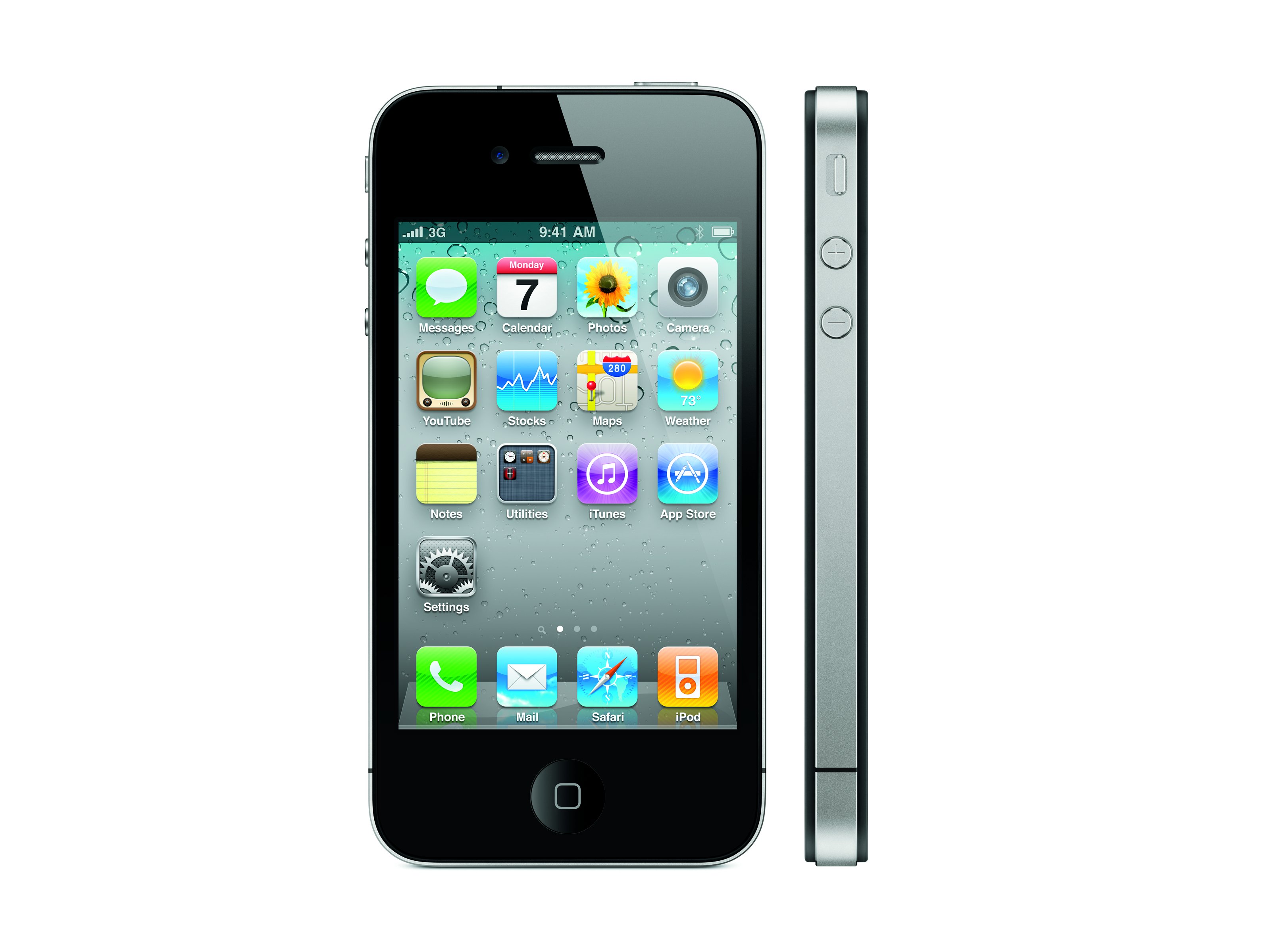Why you can trust TechRadar
The Apple iPhone 4 is still meant to be a phone first and foremost, no matter how many applications you put on there or how much the internet experience is optimised.
Previous iPhone incarnations have struggled somewhat to offer the best telephony experience, so has Apple failed to deliver a decent calling experience again?
The answer is no and sort of... no in the fact that the call quality and stability has been jolly improved, but only sort of because the iPhone 4 has some very worrying coverage issues we'll come onto.

We mentioned the noise cancelling microphones earlier, and these really do work nicely. We wandered all through London and we were able to hear our friends in all kinds of places easily, so the earpiece is nice and clear.
The friends we were chatting too also reported a very clear and non-call-dropping experience as well - we purposely didn't tell them we were using the iPhone 4, and those that had prior iPhone use were genuinely surprised.
The speaker is also nice and clear too - the distortion we've heard on other phones wasn't present even at the loudest points - in short, perfectly usable as a conferencing device.
However, there's a major issue brewing here: the iPhone 4 loses signal if you hold it in your left hand.
Yes, we know, it sounds odd, but bear with us, there's a reason for this. Apple has been fairly ingenious in the design of the iPhone 4, and in getting it so thin, it placed the antenna, Bluetooth, GPS and other radio receivers on the stainless steel band running around the edge.
But it appears contact with the palm on the bottom left corner, the most natural place to hold the phone for many, results in bars falling quickly - see the video we shot as proof.
We were initially unconcerned, as we've seen the issue before on the iPhone 3GS, and calls didn't drop out no matter where we held the phone or how few bars we had.
But when running a speed diagnostics test using SpeedTest.net, things were very different: the average speed at 3G is around 500Kbps. With the iPhone 4 in the left hand this dropped to just under 10Kbps on the EDGE network.
If you use the Bumper, the shorting doesn't happen and there's no signal loss - on the contrary, things are very good on the signal and data front.
Apple has responded by simply telling users not to hold the phone this way – so it seems there's no fix on the horizon.
However, we'll be honest: while you shouldn't have to put up with such a major flaw in a mobile phone, it's not as much of a big deal as you'd think, and we couldn't make it drop calls even when the palm was heavily pressed on
It is very wrong that you can only either browse the internet using your right hand or holding the phone a little differently.
It's not a deal breaker if you're thinking of getting the iPhone 4 – but it is very annoying and does border on the ridiculous for a company that prides itself on such intense quality control.
FaceTime
Onto brighter things now, and Apple's odd choice to bring back video call with the new iPhone 4.
Basically, it's the same principle us Brits have been messing around with for nearly a decade - see your friends in real time while you walk around, and they can see you in turn.

There are many reasons why video calling has never taken off here, and one of them is the complexity of setting it up - at least Apple has removed that hurdle here.
You can choose to video call someone from their profile in your phone, or even switch the call to FaceTime halfway through to start up a video call instead.
A simple button press flicks between the front-facing VGA camera and the rear 5MP effort, and you also get the option to move the little pane showing your own face around the screen - although you can't put it right in the centre for comedy effect.

While it's true that the audio and video quality is much improved using the iPhone 4's FaceTime application, we still can't see why this will herald the second coming of video calling.
Sure, the likes of Skype have made video chat more popular, but sitting at your PC or in your living room and looking at a larger screen just seems more natural than talking to your phone.
Plus you can currently only use FaceTime over Wi-Fi, which surely needs to change very soon, as there's no way of telling if someone is going to be available or not when you want to chat, unless you're already on a call with them.
In our tests, we were overall nonplussed by the experience. The video quality didn't seem that different from front to rear camera, and the pictures were a little grainy, which we didn't expect over Wi-Fi.
One plus point – if you have two iPhone 4s, then you can FaceTime call yourself. If you've ever wondered what the back of your hair looked like properly, this is the way to find out.
Contacts
The contacts system on the iPhone is a pretty standard affair - you've got all your friends listed in the way you'd imagine they would be, and a little column of letters on left allows you to quickly find a certain alphabetical group of buddies.
You can also easily search for your friends using the Spotlight application too, if you're a little lazy, and the whole experience works nicely.
Contact information is pretty sparse, but all the fields you need are there - IM handle is the most advanced offering you get when adding in new info.

We much prefer the simple awesomeness of the HTC Sense UI on the likes of the Desire and the Legend - the ability to sync Twitter and Facebook, see your call and messaging history and even browse their photos is an immense feature.
Still at least the iPhone 4 does things simply - apart from the fact it gets a bit too formal at times in the listing process.
If you have a friend on your SIM card or Google contact called Mr Sweatband, for instance, he would have previously been listed under 'M', but the iPhone 4 sees his last name instead and puts him under 'S'. Little thing, but annoying there's nothing you can do about it.

Thankfully you can synchronise contacts from Google or Exchange as well as searching the latter's online server if you can't find the person you're looking for straight away.
This makes the porting process from another smartphone so much easier if you're not a previous iPhone user.
Current page: Apple iPhone 4: Calling, FaceTime and contacts
Prev Page Apple iPhone 4: Interface part 2 Next Page Apple iPhone 4: Messaging
Gareth has been part of the consumer technology world in a career spanning three decades. He started life as a staff writer on the fledgling TechRadar, and has grown with the site (primarily as phones, tablets and wearables editor) until becoming Global Editor in Chief in 2018. Gareth has written over 4,000 articles for TechRadar, has contributed expert insight to a number of other publications, chaired panels on zeitgeist technologies, presented at the Gadget Show Live as well as representing the brand on TV and radio for multiple channels including Sky, BBC, ITV and Al-Jazeera. Passionate about fitness, he can bore anyone rigid about stress management, sleep tracking, heart rate variance as well as bemoaning something about the latest iPhone, Galaxy or OLED TV.
Most Popular


